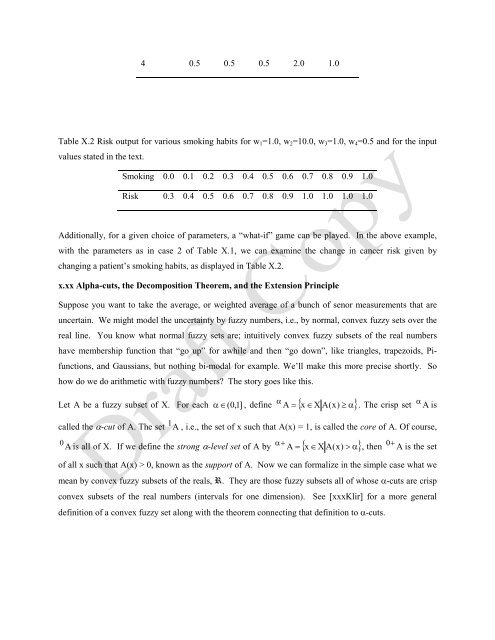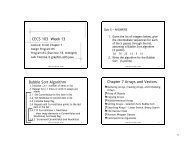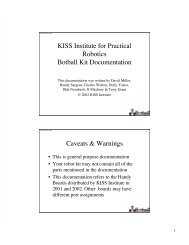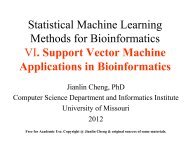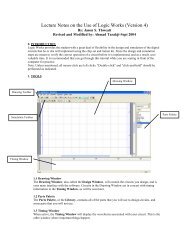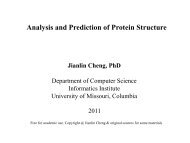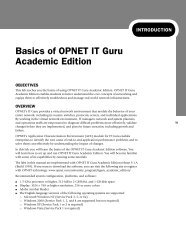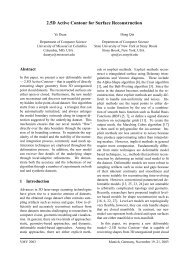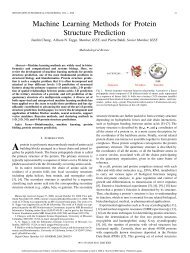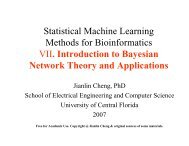Chapter X: Introduction to Fuzzy Set Theory Uncertainty is universal ...
Chapter X: Introduction to Fuzzy Set Theory Uncertainty is universal ...
Chapter X: Introduction to Fuzzy Set Theory Uncertainty is universal ...
Create successful ePaper yourself
Turn your PDF publications into a flip-book with our unique Google optimized e-Paper software.
4 0.5 0.5 0.5 2.0 1.0<br />
Table X.2 R<strong>is</strong>k output for various smoking habits for w 1 =1.0, w 2 =10.0, w 3 =1.0, w 4 =0.5 and for the input<br />
values stated in the text.<br />
Smoking 0.0 0.1 0.2 0.3 0.4 0.5 0.6 0.7 0.8 0.9 1.0<br />
R<strong>is</strong>k 0.3 0.4 0.5 0.6 0.7 0.8 0.9 1.0 1.0 1.0 1.0<br />
Additionally, for a given choice of parameters, a “what-if” game can be played. In the above example,<br />
with the parameters as in case 2 of Table X.1, we can examine the change in cancer r<strong>is</strong>k given by<br />
changing a patient’s smoking habits, as d<strong>is</strong>played in Table X.2.<br />
x.xx Alpha-cuts, the Decomposition Theorem, and the Extension Principle<br />
Suppose you want <strong>to</strong> take the average, or weighted average of a bunch of senor measurements that are<br />
uncertain. We might model the uncertainty by fuzzy numbers, i.e., by normal, convex fuzzy sets over the<br />
real line. You know what normal fuzzy sets are; intuitively convex fuzzy subsets of the real numbers<br />
have membership function that “go up” for awhile and then “go down”, like triangles, trapezoids, Pifunctions,<br />
and Gaussians, but nothing bi-modal for example. We’ll make th<strong>is</strong> more prec<strong>is</strong>e shortly. So<br />
how do we do arithmetic with fuzzy numbers? The s<strong>to</strong>ry goes like th<strong>is</strong>.<br />
Let A be a fuzzy subset of X. For each ∈(0,1]<br />
A . The cr<strong>is</strong>p set<br />
α<br />
A <strong>is</strong><br />
α , define<br />
α<br />
= { x ∈X A(x) ≥ α}<br />
called the α-cut of A. The set 1 A , i.e., the set of x such that A(x) = 1, <strong>is</strong> called the core of A. Of course,<br />
0<br />
A<br />
A , then<br />
0+<br />
A <strong>is</strong> the set<br />
<strong>is</strong> all of X. If we define the strong α-level set of A by<br />
α+<br />
= { x ∈X A(x) > α}<br />
of all x such that A(x) > 0, known as the support of A. Now we can formalize in the simple case what we<br />
mean by convex fuzzy subsets of the reals, R. They are those fuzzy subsets all of whose α-cuts are cr<strong>is</strong>p<br />
convex subsets of the real numbers (intervals for one dimension). See [xxxKlir] for a more general<br />
definition of a convex fuzzy set along with the theorem connecting that definition <strong>to</strong> α-cuts.


